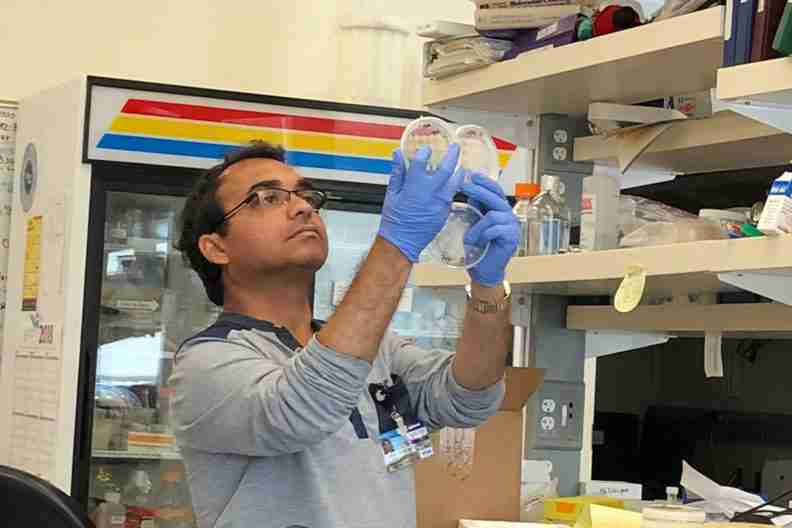
Viruses cause billions of dollars in losses for many food, feed, and fiber crops, including staples like wheat, rice, potatoes, cassava, beans, and plantains. In a scientific first, Washington State University researchers delivered a one-two punch to knock out these viruses, using precise, targeted editing of viral genes.
Popularly known as CRISPR-Cas9, this genome editing approach can delete and replace individual bases in DNA.
“Genome editing is one of the most powerful and groundbreaking developments in molecular biology, with potentially far-reaching applications in agriculture, biology, and medicine,” said Hanu Pappu, Samuel H. Smith Distinguished Professor and Chuey Endowed Chair in WSU’s Department of Plant Pathology.
In a recent article in the journal PloS One, Pappu and his collaborators showed that precise modifications of multiple genes of a virus at the same time both disabled the virus and made the plants highly resistant to disease.
The study’s lead authors—Anirban Roy, a visiting scientist on sabbatical from the Indian Agricultural Research Institute in New Delhi, and Ying Zhai, a post-doctoral fellow in Pappu’s lab—used a crop-destroying DNA virus to apply this approach. Their collaborators included WSU crop science professor Michael Neff and his doctoral student Jessica Ortiz. Roy was supported by a fellowship from the joint Indo-U.S. Genome Editing Initiative.
“Commonly referred to as begomoviruses, these are some of the most destructive viruses of vegetable crops in tropical and sub-tropical countries around the world,” Roy said. Begomoviruses are spread by whiteflies, a tiny insect that feeds on plants, making them extremely difficult to control.
“These viruses tend to mutate and evolve to escape their host plants’ defenses, and are notorious for overcoming host plant resistance,” Pappu said. “This makes developing virus resistant crops that remain disease resistant very challenging.”
With his Indian collaborators, Sunil Mukherjee and Bikash Mandal, Pappu tried a new tactic: simultaneously targeting and editing several different genes of the virus that are critical for its multiplication and survival. The result was remarkably cumulative: plants were able to resist the virus infection, and they remained symptom-free.
While CRISPR-Cas9 was used to edit out single bases in one gene, Pappu’s team found a downside to this approach. The edited virus quickly mutated to its original form and started causing disease.
“We went back to the drawing board and tried to come up with a way to disable the virus more effectively,” Pappu said.
“It was a great moment when we did not see any indication that the virus was able to mutate, after we edited its genes at multiple locations,” Zhai added.
Now, with their proof of concept, the scientists say it could be possible to extend this approach to any begomovirus-host combination.
“Genome editing is one more weapon in the arsenal for the continued fight to protect crops from viruses,” Pappu said.
Read the team’s PLoS One journal article, Multiplexed editing of a begomovirus genome restricts escape mutant formation and disease development (Roy, A., Y. Zhai, J. Ortiz, M.M. Neff, B. Mandal, S.K. Mukherjee and H.R. Pappu (2019).
Media contact:
- Hanu Pappu, Samuel H. Smith Distinguished Professor and Chuey Endowed Chair, Department of Plant Pathology, 509-335-3752, hrp@wsu.edu